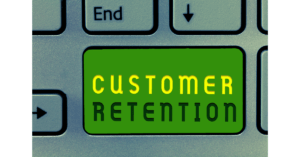High friction touchpoints are moments in the customer journey that can cause frustration and lead to customer churn. If left unaddressed, high friction touchpoints can have a negative impact on your business. In this blog, we will explain what is a high friction touchpoint, how they can impact your business, and how to identify them using customer support analytics. We’ll also provide examples of common high friction touchpoints in each stage of the customer journey and strategies for managing them effectively.
What is A High Friction Touchpoint?
High friction touchpoints are points of contact where customers may have a poor customer experience or have unmet expectations. It could be during an online purchase, during product-browsing stage, while checking websites, or during post-purchase support.
Why is this data important?
Understanding the root cause behind every high friction touch point allows businesses to strategically focus on these areas to avoid potential customers from leaving. Access this data at all touchpoints to ensure that the potential and current users have a seamless and high-quality experience throughout their journey. Analyzing and improving these issues can lead to increased brand awareness, upselling, and cross-selling opportunities, as well as maintaining happy customers.

Identifying High Friction Touchpoints in Customer Support
Customer support interactions often reveal areas where customers experience frustration and difficulty, commonly known as high friction touchpoints. These high friction touchpoints can negatively impact brand perception and customer satisfaction. Addressing these touchpoints is crucial for improving the overall customer experience. Understand the impact of high friction touchpoints and actively work towards resolving them. Create a seamless and enjoyable journey for customers who use your product or service.
Analyze customer support interactions
Analyzing customer support interactions can give us a host of information for every contacted individual. If you want to provide customer delight, lend an ear to these telephonic interactions and decipher the obstacles to a memorable CX. By utilizing NLP techniques to analyze these interactions, you can gain insights into problematic areas that cause high frustration metrics. Analyzing customer support interactions can identify trends in high friction touchpoint. By utilizing data from customer support interactions, businesses can optimize their customer touchpoints and ensure that their customers have a high-quality experience throughout their entire journey.
Use CRM data to address pain points
Analytical tools can give you an advantage but with metrics. By analyzing customer data, you can gain valuable insights into key touchpoints and pinpoint specific pain points. This data-driven approach enables proactive problem-solving and empowers you to make informed decisions in addressing problem areas. This includes customer interactions, tracking user behavior on your website, monitoring social media engagement, brand based conversations, online reputation etc. Marketers can use this data analytics to identify problem areas and take appropriate actions to improve the overall customer experience. Manage expectations and go above and beyond to close the feedback loop.
Examples of High Friction Touchpoints
In the customer journey, high friction touchpoints can be found at various stages. For instance, during the signup and checkout processes, common high friction touchpoints arise. Product pages with a poor user experience can also become problematic points of contact. Additionally, navigation issues on a website can create an unpleasant experience for users. Furthermore, high friction touchpoints during the onboarding process can deter a potential buyer from a potential sale.

1. The acquisition stage
While navigating the acquisition stage of the customer journey, certain touchpoints can hinder the process. The design of the landing page plays a crucial role in attracting potential customers and converting them into leads. Optimizing call-to-action (CTA) buttons is essential to guide users towards the next step without any confusion. A complicated signup process can lead to abandonment. So it’s important to streamline and simplify it. Providing adequate product information is vital for potential customers to make informed decisions. Additionally, ensuring easy access to relevant information is crucial to prevent any frustrations.
2. The activation stage
In the activation stage, there are several notable high friction touchpoints that can cause customer churn. One common issue arises when onboarding processes lack clear instructions, making it difficult for users to get started. Additionally, complex setup procedures can be overwhelming and impede progress. Another challenge is insufficient guidance during the initial usage of a product, leading to confusion and frustration. Difficulties in accessing support resources further contribute to high friction touchpoints. Lastly, poor communication during the activation stage can leave users feeling unsupported.

3. The retention stage
In the retention stage, there are several prevalent high friction touchpoints that can impact customer satisfaction and retention. This includes the lack of personalized communication. When customers feel like they are receiving generic, impersonal messages, it can create a disconnect and diminish their overall experience. Difficulties in accessing account information can also be a significant pain point for customers. If they can’t easily find or update their information, it can lead to frustration and potentially drive them away. Additionally, inadequate support during technical issues can severely impact customer retention.
4. The post-purchase stage
When customers encounter problems and don’t receive the necessary assistance, it can erode their trust in the brand. Ignoring or delaying customer feedback is another high friction touchpoint in the retention stage. Customers want to feel heard and valued. When their feedback is ignored or not addressed promptly, it can lead to dissatisfaction. Finally, insufficient updates on new features or improvements can be a source of frustration for customers. They expect to be kept informed about the progress and enhancements made to the products or services they are using. Ensure regular communication and updates and minimize these high friction touch points throughout the retention stage.
How Can High Friction Touchpoints Impact Your Business?
People are always willing to give most brands a second chance. It is only a matter of time till brands test their patience. Consumers and potential buyers are visiting organisations via websites, social media platforms and on other virtual channels. It usually costs a lot to get back a churned customer. A wiser strategy would be to focus on the present customers and aim for long-term customer retention.
Effects on customer satisfaction and retention
High friction touchpoints have a direct impact on customer satisfaction levels. It is crucial to address pain points in the customer journey to improve customer satisfaction metrics. Focusing on high friction touchpoints allows businesses to retain valuable customers and increase loyalty. Achieve higher customer satisfaction levels and foster long-term relationships. This ultimately leads to increased customer lifetime value (CLV) and improved business performance.
Influence on Customer Lifetime Value (CLV)
Enhancing touchpoints throughout the customer journey has a significant influence on Customer Lifetime Value (CLV). High friction touchpoints have the potential to lower CLV, as they can lead to customer dissatisfaction and churn. However, by improving these touchpoints, businesses can increase the potential for higher CLV. Addressing pain points in the customer journey and enhancing customer experience at critical touchpoints not only boosts CLV but also improves overall satisfaction. Optimizing high friction touchpoints is essential to maximize customer lifetime value and ensure that customers have a positive experience throughout their entire journey.
Strategies for Managing High Friction Touchpoints
One effective approach is to implement customer feedback mechanisms, which can help you identify the touchpoints that are causing the most friction for your customers. Another strategy is to utilize A/B testing to optimize these high friction touchpoints. By testing different variations and analyzing the results, you can make data-driven decisions to improve the customer experience.
Seek feedback via multichannel survey mediums
Proactively addressing customer support issues is also essential in minimizing friction. You can do this by deploying customer feedback surveys on WhatsApp and Facebook messenger applications. While people use their laptops and computers, deploy an AMP email survey for a faster response without going into an external browser. Using these responses, the customer support team can promptly resolve customer inquiries or concerns. You can prevent further damage in this manner. Additionally, regularly reviewing and updating your customer support practices can help you identify areas where friction may arise and make necessary improvements.
Leverage this data from Merren dashboards or Google Analytics for an extensive view of the problem areas. Analyzing this data allows you to identify patterns, trends, and areas of improvement, ultimately helping you enhance the overall customer experience.
Implementing customer feedback mechanisms
Actively listening to customer feedback is essential in identifying pain points and taking appropriate actions to improve touchpoints. Implementing a customer feedback loop ensures continuous improvement of touchpoints based on customer insights. Leveraging customer testimonials and reviews can enhance touchpoint performance and build brand awareness. Real-time customer feedback should be incorporated into touchpoint optimization processes to ensure the entire journey meets customer expectations.
Optimizing high friction touchpoints through A/B testing
A/B testing allows you to implement changes based on user preferences, ensuring a better experience. Analyzing the results of these tests will help you refine and optimize high friction touchpoints. It’s important to continuously iterate and improve touchpoints using A/B testing methodologies. This approach ensures that you provide a high-quality user experience, meet customer expectations, and increase brand awareness. By optimizing touchpoints, you can enhance customer satisfaction and drive conversions.
How Can You Prevent High Friction Touchpoints in the Future?
To prevent high friction touchpoints in the future, implement proactive customer support measures and regularly review and update customer support practices. Anticipate customer needs and provide relevant information at key touchpoints. Streamline the signup process for a smoother user experience. Utilize customer journey maps to identify potential problem areas.

1. Proactive customer support measures
To enhance the overall customer experience and minimize high friction touchpoints, implement proactive customer support measures. One effective measure is to offer live chat or chatbot support, providing immediate assistance throughout the customer journey. Additionally, comprehensive self-service resources can address common queries, empowering customers to find solutions on their own. Personalizing support interactions adds a human touch, making customers feel valued and understood. Proactive support can also be provided through timely email newsletters and relevant content, keeping customers engaged and informed. Finally, a well-trained support team ensures efficient handling of customer issues, resulting in a satisfactory experience.
2. Regular review and update of customer support practices
Regularly reviewing and updating customer support practices is crucial for ensuring high-quality service. By continuously assessing these practices, you can identify areas for improvement and stay updated with industry trends and best practices in customer support. Regular training sessions for your customer support teams will enhance their skills and knowledge, enabling them to provide exceptional assistance. It’s also essential to leverage customer feedback to drive improvements in your support practices. Using a CRM system to track and manage customer interactions will help you better understand and cater to their needs. Remember, happy customers are the key to success!
Conclusion
In conclusion, understanding high friction touchpoints and their impact on your business is crucial for providing a seamless customer experience. By identifying these touchpoints, analyzing customer interactions, and utilizing analytics, you can pinpoint problem areas and take proactive measures to address them. This will improve customer satisfaction and retention and enhance customer lifetime value. Implementing customer feedback mechanisms and optimizing touchpoints through A/B testing are effective strategies for managing high friction touchpoints.
Remember, every interaction with a customer is an opportunity to create a positive impression and build long-lasting relationships. So, prioritize customer experience and take steps to minimize high friction touchpoints at every stage of the customer journey. To revamp the way you collect respondent data, we have something interesting for the modern day marketer!
Using Merren, you can supercharge your feedback practices and get more insights than you have bargained for! Sign up for a 14 day free trial and discover how messenger applications can upgrade your customer feedback reports.

